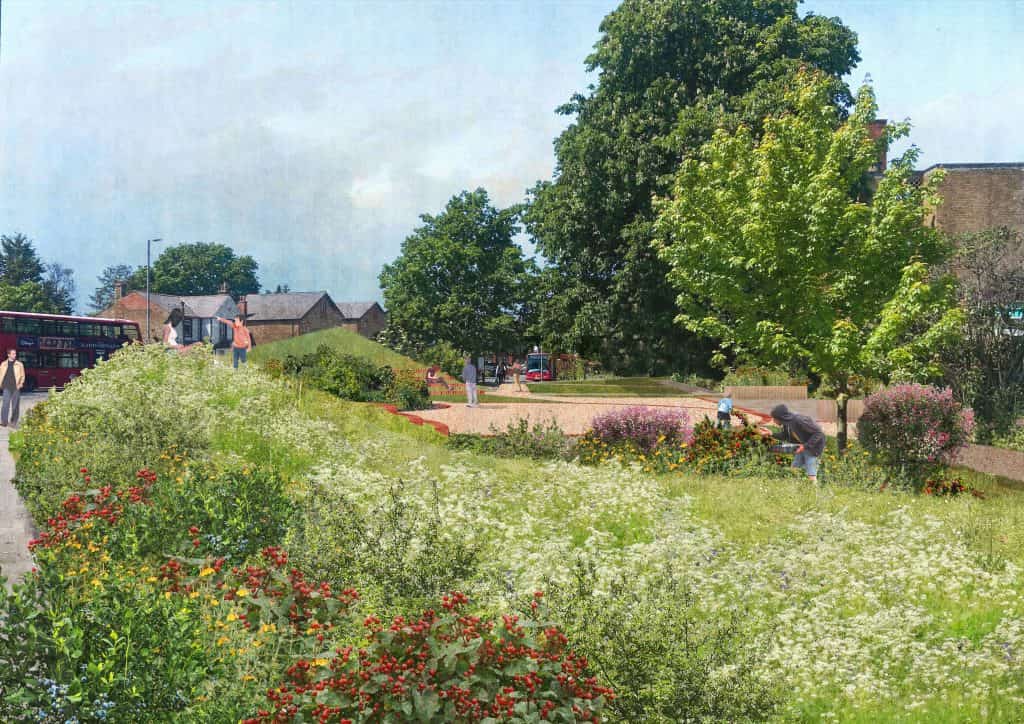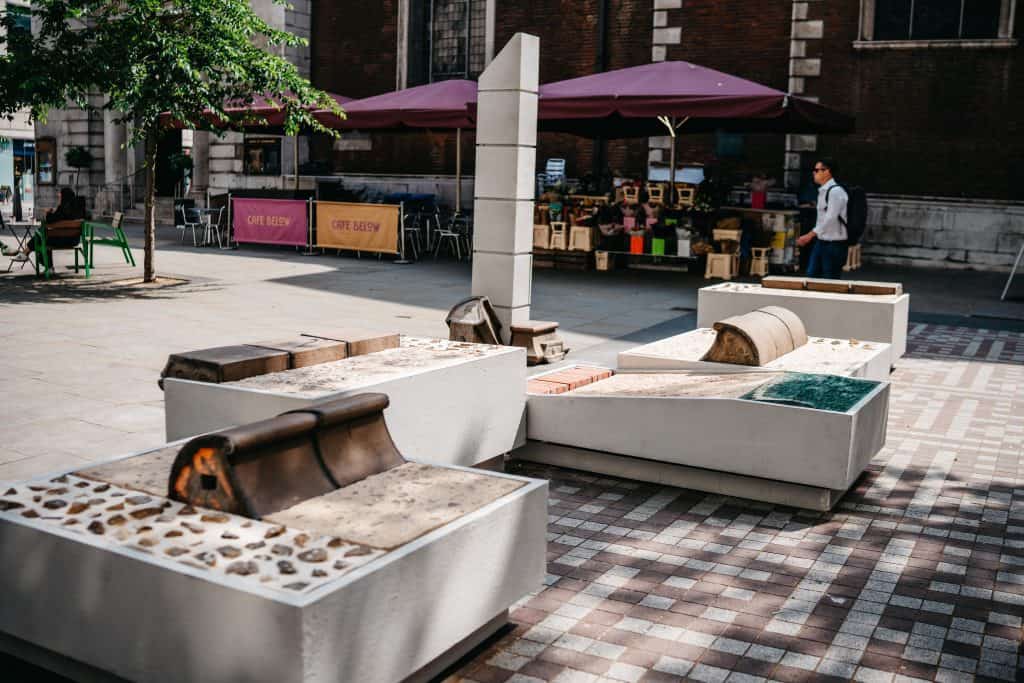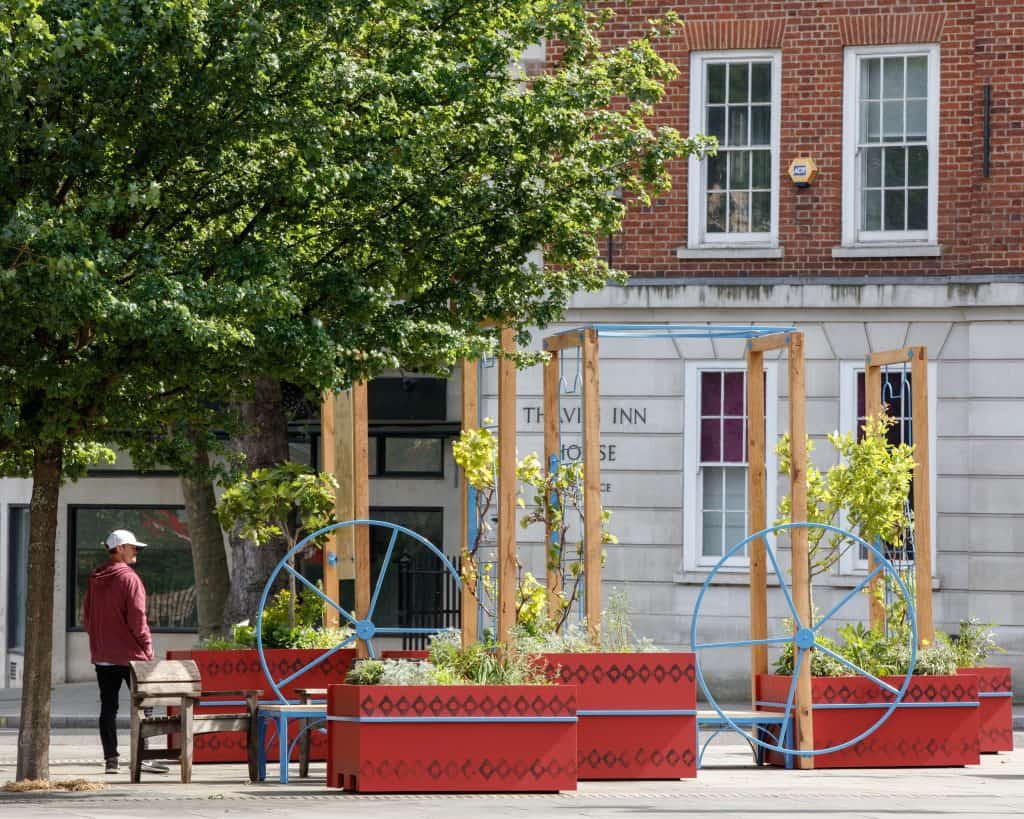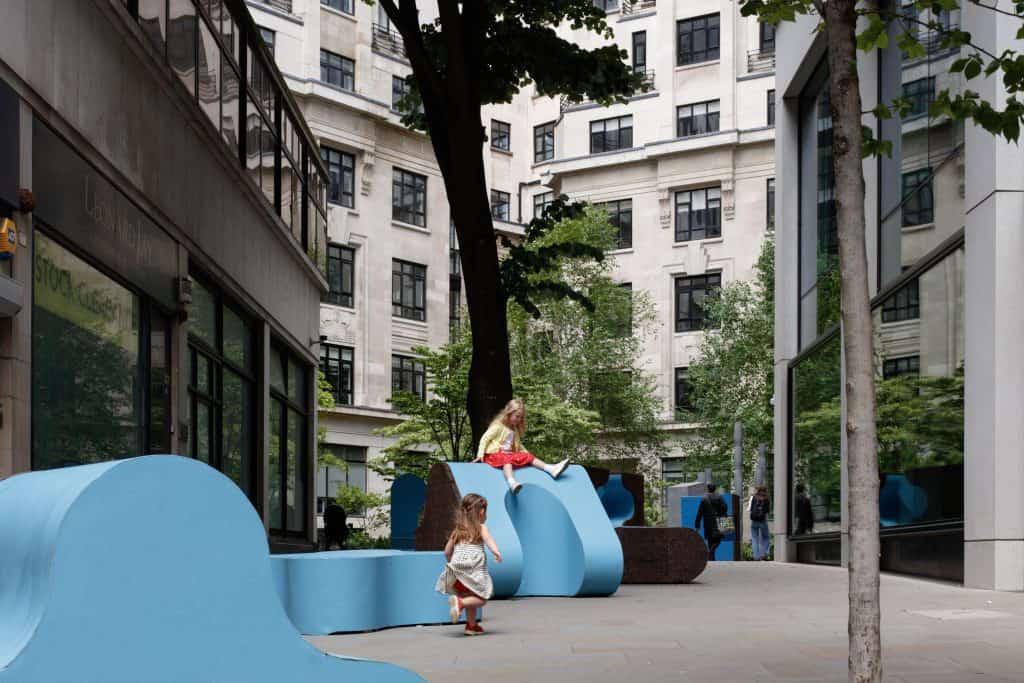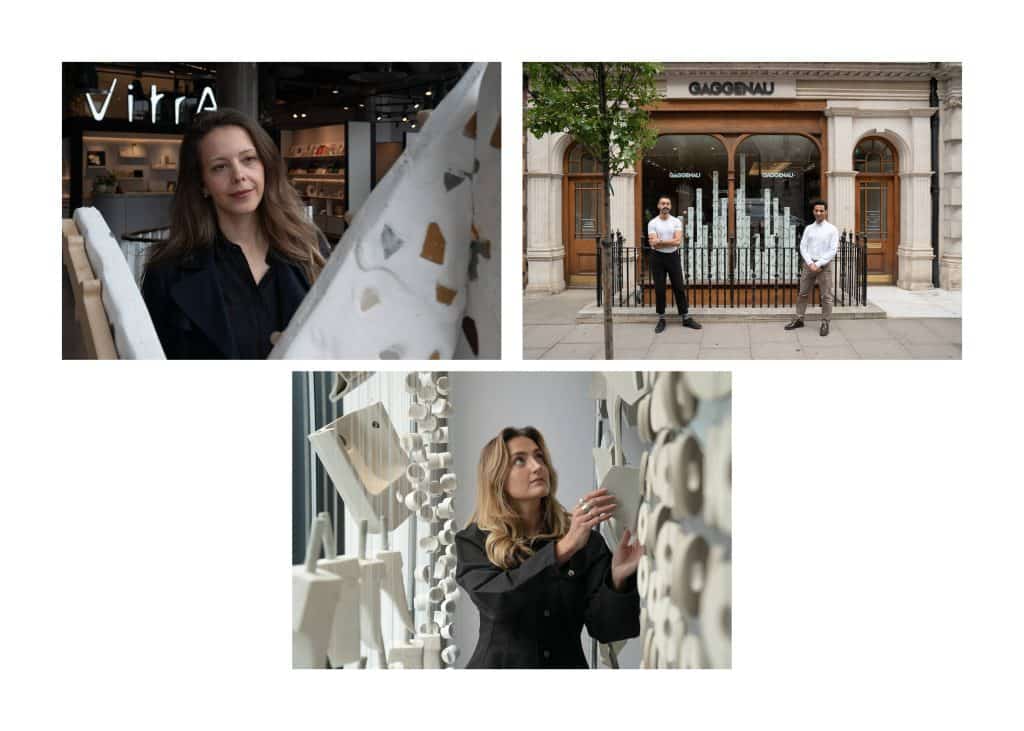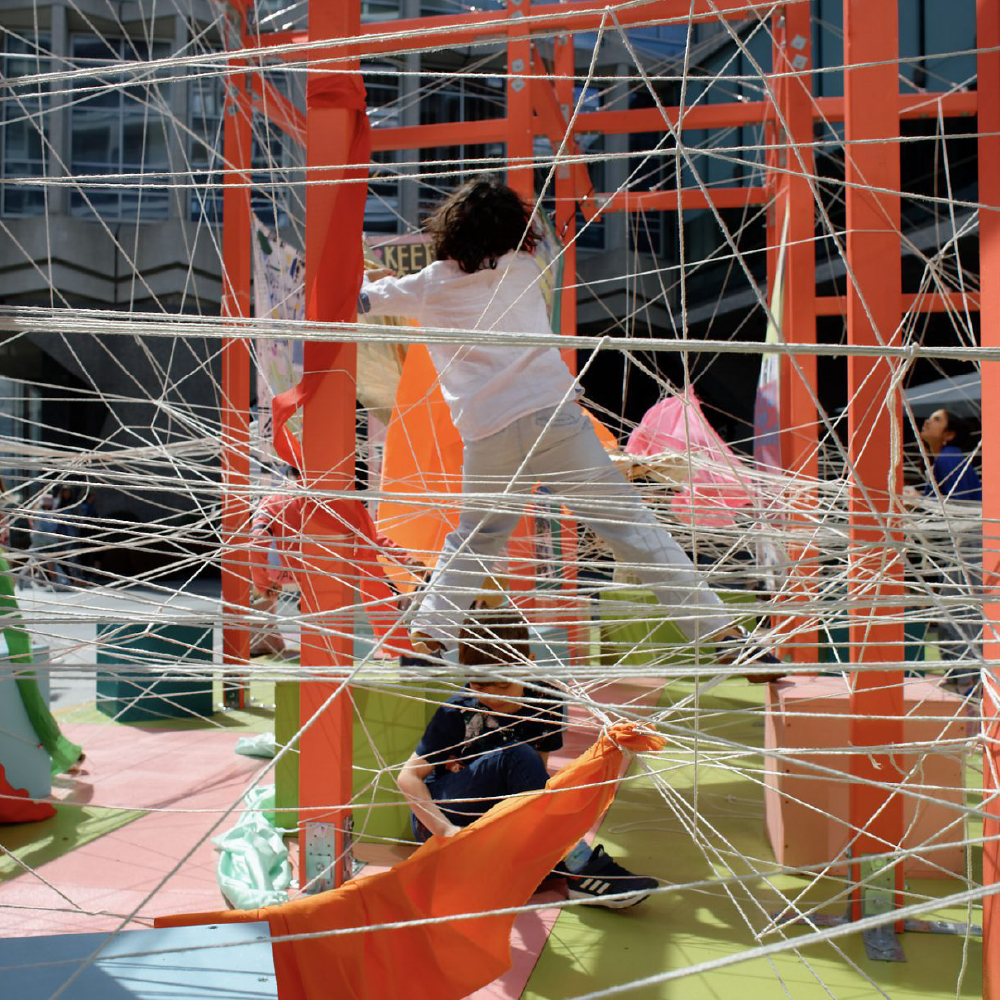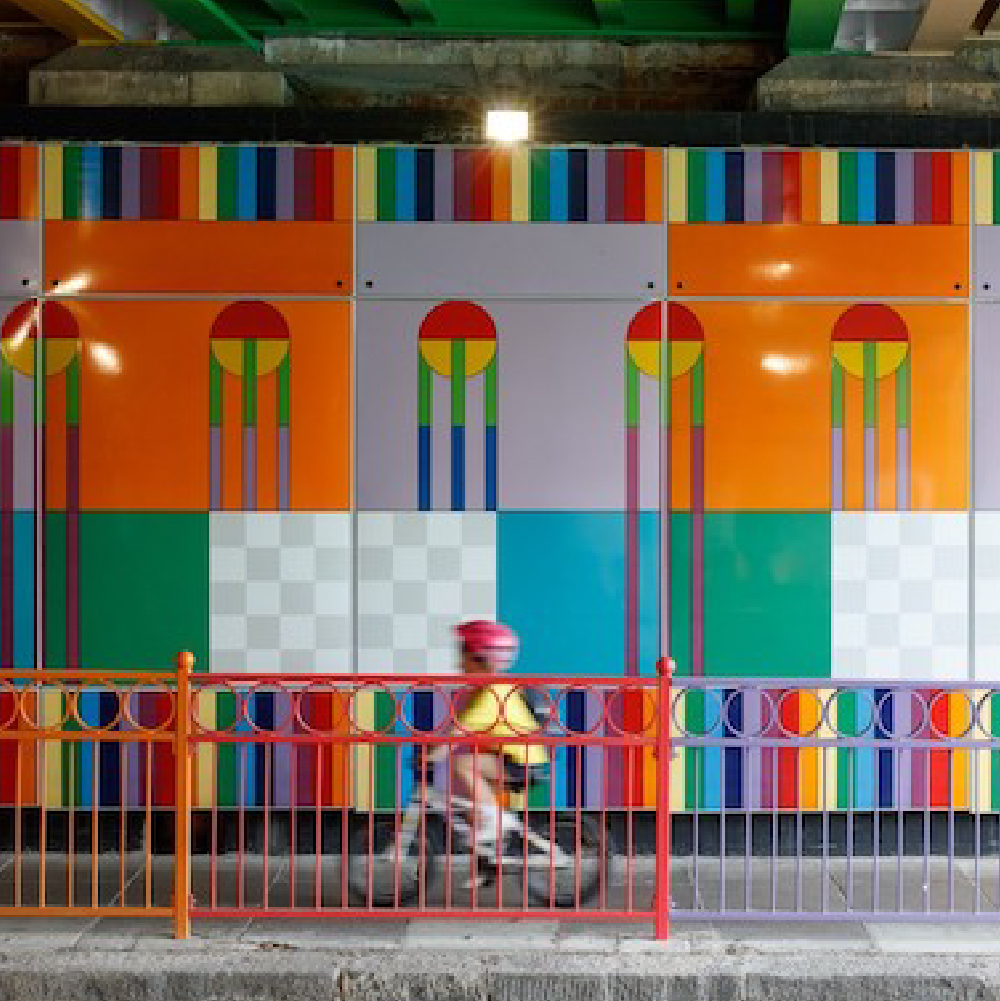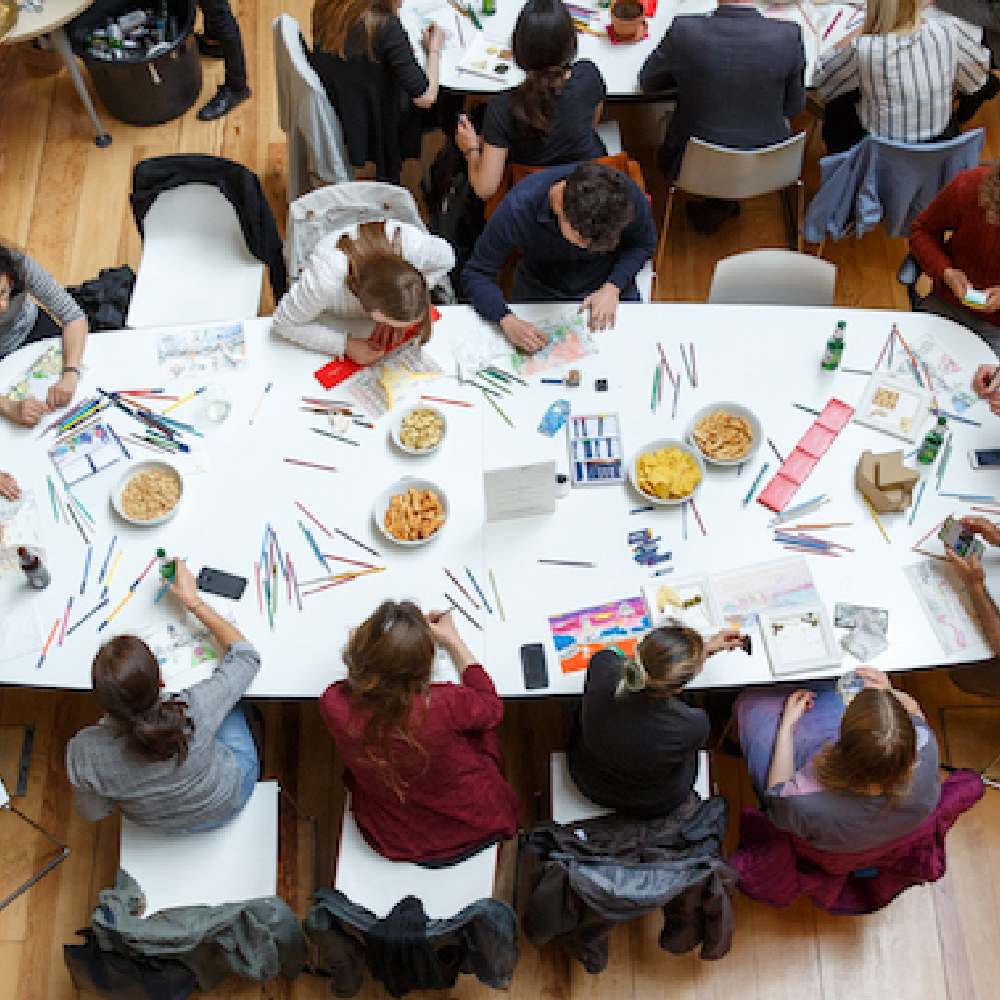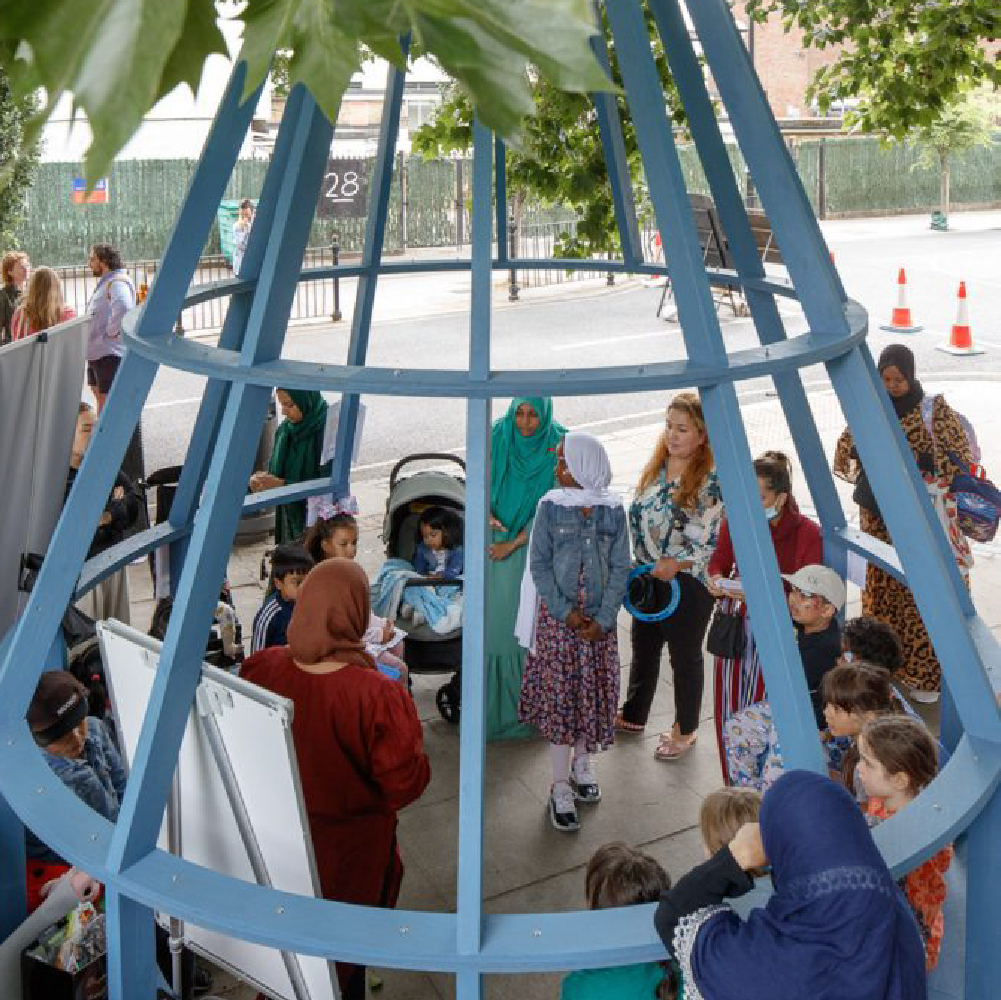LFA and Network Rail have announced Muslim Women in Architecture (MWA) as the winners of the Curating Concourses competition. Their winning concept, “As you’re passing by”, looks to transform people’s experience of Euston Station’s concourse with a bold, and engaging installation that brings different communities together, using interactive design to communicate content in a way that is accessible to all.
Open to all emerging architects, designers, artists and curators, the competition sought imaginative proposals for a prototype exhibition concept that can enhance station users’ experience, encourage people to engage with displayed content, and test the future of exhibitions in stations.
Muslim Women in Architecture’s design overcame strong competition from an impressive selection of up-and-coming architects and designers who were shortlisted for the project: Bamidele Awoyemi, Farouk Agoro and Livia Wang, Editional Studio, Everyday Fictions, Mark + Cristina and Project Poché. Each team produced a short video for the judges which explained their design approach to the competition.
You can watch each team’s video below:
1. Bamidele Awoyemi, Farouk Agoro & Livia Wang
As spaces that bring together people from all backgrounds, Mark + Cristina think stations should work harder to become better community assets. Their proposal therefore needs to do more than just be an exhibition space – it needs to have added social value. They’re are proposing a multi-use structure that has the flexibility to also host activities, workshops and events – whether that’s in Euston Station or other future locations – giving it an ‘afterlife’. It’ll also have a community noticeboard to showcase what’s happening in the local area and be a springboard to local assets.
Mark + Cristina wanted to include local commissioning and participation in the design process. To do this they’ve teamed up with designers Silo Studio and Kings Cross-based Store Projects – who are a CIC that drive social change by enabling public access to art and design. Together they will facilitate a ‘making’ workshop to design and make parts of the structure.
Editional Studio’s proposed display structure is a kit of parts, easy to source and quick to assemble. Bolt together the steel frame, fill the gabion with ballast and rivet the aluminum exhibition panels in place.
Using reclaimed racking angles, track ballast or construction waste and endlessly adaptable and reprintable aluminum composite boards, the structure is sturdy, economical, reusable and recyclable.
The simple forms and raw finishes take inspiration from colourful & layered railway concourse architecture, where useful and direct structures accumulate in a variety of materials over many years of modernisation.
The video tells the story of the kit of parts traveling up and down the country; the individual modules arranged to suit each station and the changing exhibition content. The all weather structure forms a billboard, a signal box and ends up in-the round, as a backdrop to a choir.
Train stations have come a long way since the train sheds of the eighteen hundreds. Today, they are prominent, reliable places not only for transportation but as places to meet, eat and shop. Yet there’s one aspect that’s missing.
Everyday Fictions intends to fill this gap by providing stations with Platforms for Culture – a system of simple forms used to create exhibitions, galleries, cinemas, stages, seating – the possibilities are endless. As individual objects they are free to be positioned or arranged, adapting to spatial limitations and their intended purpose.
This design thinks beyond a single exhibition and towards the ever changing role a station plays within a community.
Network Rail connects people and places. When travelling from one place to another, people bring the most essential and precious objects in their suitcases. Travelling in history, Network Rail also takes its suitcase, carrying the treasured historic elements while adding innovative ideas.
The concept of this design is ‘Suitcases’. It is inviting passengers, visitors, staff and the public to peep into what is Network Rail carrying into the future with its latest Design Manuals.
The design is actively responding to the brief and the particular condition of the concourse. These standardised mobile structures are easy to produce, assemble, maintain, and transport. With the exhibits enclosed in the ‘suitcases’, potential damages are minimized. It is easy to update the exhibition content by replacing the inner board, while the lighting and multi-media devices will be powered by portable power banks that can be recharged without opening the ‘Suitcases’. High strength translucent Acrylic panel will be applied as the envelope of ’Suitcases’ —- not only to communicate the transparency of the Network Rail but also to drive the curiosity of the visitors. Braked rubber Castors are used to improve the flexibility of installation without compromising the health and safety consideration. These devices are also adaptable with numerous future possibilities, such as community bookshelves, planters and kiosks.
6. Muslim Women in Architecture
As you’re passing by…
Responding to the brief and Wayfinding documents issued by Network Rail, the installation illustrates images and graphics from these documents. Tactile surfaces, contrasting tones and materiality is one of the core elements to the installation design as well as accessibility by all. The module or ‘suitcases’ would be made up of ply sheets which slot together, making it easy to assemble on site.
The modules are mobile and can be arranged or opened and closed to any desired angles allowing for more intimate or open spaces. It is designed to grab the few fleeting moments that people spend in a concourse as they transition through spaces, using interactive and playful elements such as mirrored panels, a cog mechanism, movement and QR technology.
The installation reimagines different ways in which we can exhibit printed documents in a more tactile and interactive way whilst bringing to the user’s attention, Network Rail’s subtle design intent that is often forgotten during the bustle and speed of travel.

